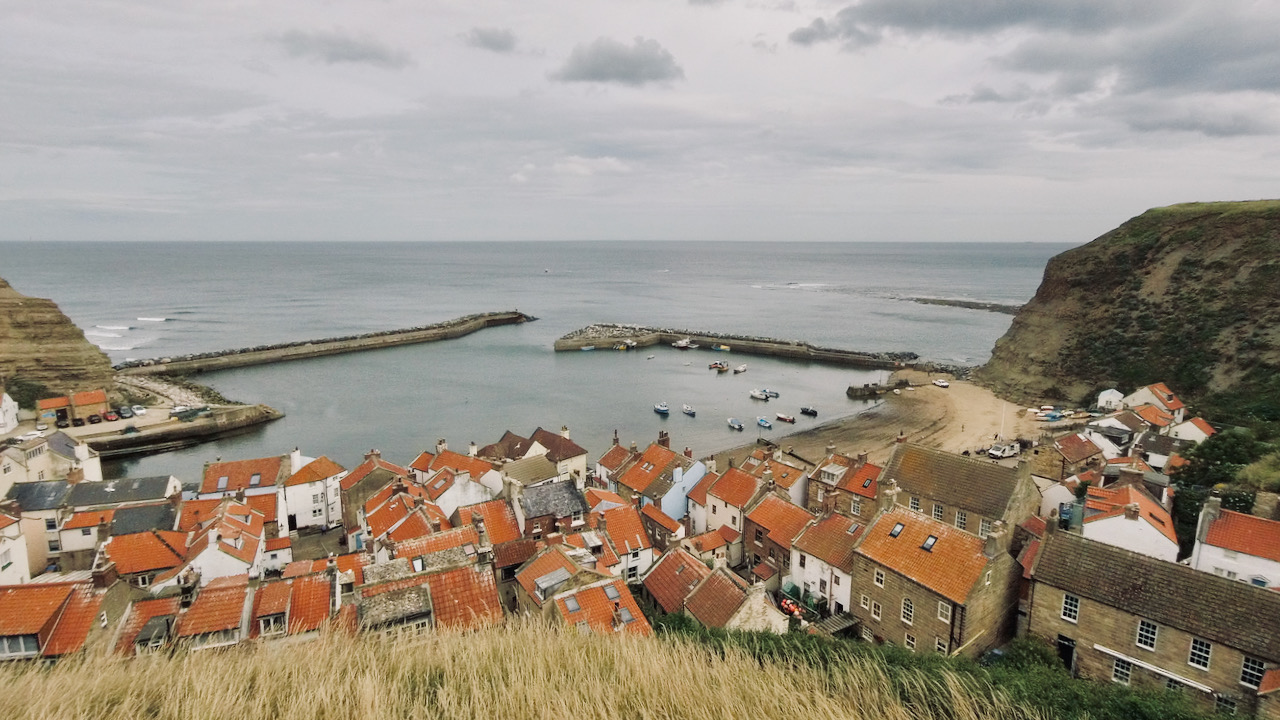In the distant past, back in 1415, when the world was a taciturn place, the medieval village of Staithes was first recorded under the name ‘Setonstathes‘1NYM HER No: 2802.. This coastal community thrived as a fishing haven during the 16th century, only to prosper further in the 19th century as local ironstone, alum, and jet mining took hold. Many argue that, amidst this industrious atmosphere, the clandestine world of smuggling also contributed to its growth.
The village, captured in this image from Old Stuble Hill, is now a bustling destination for eager tourists. Its transformation can be traced back to the arrival of the railway in 1883. Before long, the bounty of the sea—cod, haddock, and mackerel—was hauled in to fill three dedicated fish trains each week. This railway formed part of the Loftus to Whitby line, the last piece in the coastal link connecting Middlesbrough to Whitby. Originally championed by the Whitby, Redcar, and Middlesbrough Union Railway, the North Eastern Railway assumed control as the initial enterprise found itself penniless. This 16-mile line came at a price, then the whopping sum of £42,000, but eventually Staithes became the first station along the Yorkshire coast to bid farewell to its passengers in 1958.
Among those early explorers of this newfound tourist haven was Gilbert Foster, a Leeds-based artist who owned a holiday retreat in nearby Runswick Bay. It was Foster who stumbled upon the picturesque charm of Staithes, a captivating congregation of lofty, pantiled-roofed cottages clinging to the cliff-side, nestled between two steep valleys.
Soon, artists from Yorkshire and beyond succumbed to the village’s magnetic allure, transforming it into an artistic hotspot during the 1880s. Thus, the renowned Staithes Group of painters came into being, a gathering of nearly thirty talents. Now, art is not my forte, but I have read that Laura Knight was the most skilled among this esteemed assembly, which heyday spanned until around 19102North. 2021. ‘Summer Exhibitions’, The Official Blog for the North York Moors National Park (The official blog for the North York Moors National Park) <https:// northyorkmoorsnationalpark.wordpress.com/2021/08/16/summer-exhibitions/> [accessed 14 July 2023].
Most of the group’s subjects were featured landscapes, portraying the lives of the fisherfolk, farmers and traditional working horses. Much of their art was crafted ‘en plein air,’ in the open air rather than confined within studio walls. Naturalistic, romanticised, and occasionally tinged with impressionistic hues (albeit conservatively so), their creations exuded an air of bohemian spirit and artistic intrigue, all while maintaining an air of respectability. Or so I read.
- 1NYM HER No: 2802.
- 2North. 2021. ‘Summer Exhibitions’, The Official Blog for the North York Moors National Park (The official blog for the North York Moors National Park) <https:// northyorkmoorsnationalpark.wordpress.com/2021/08/16/summer-exhibitions/> [accessed 14 July 2023]

Leave a Reply